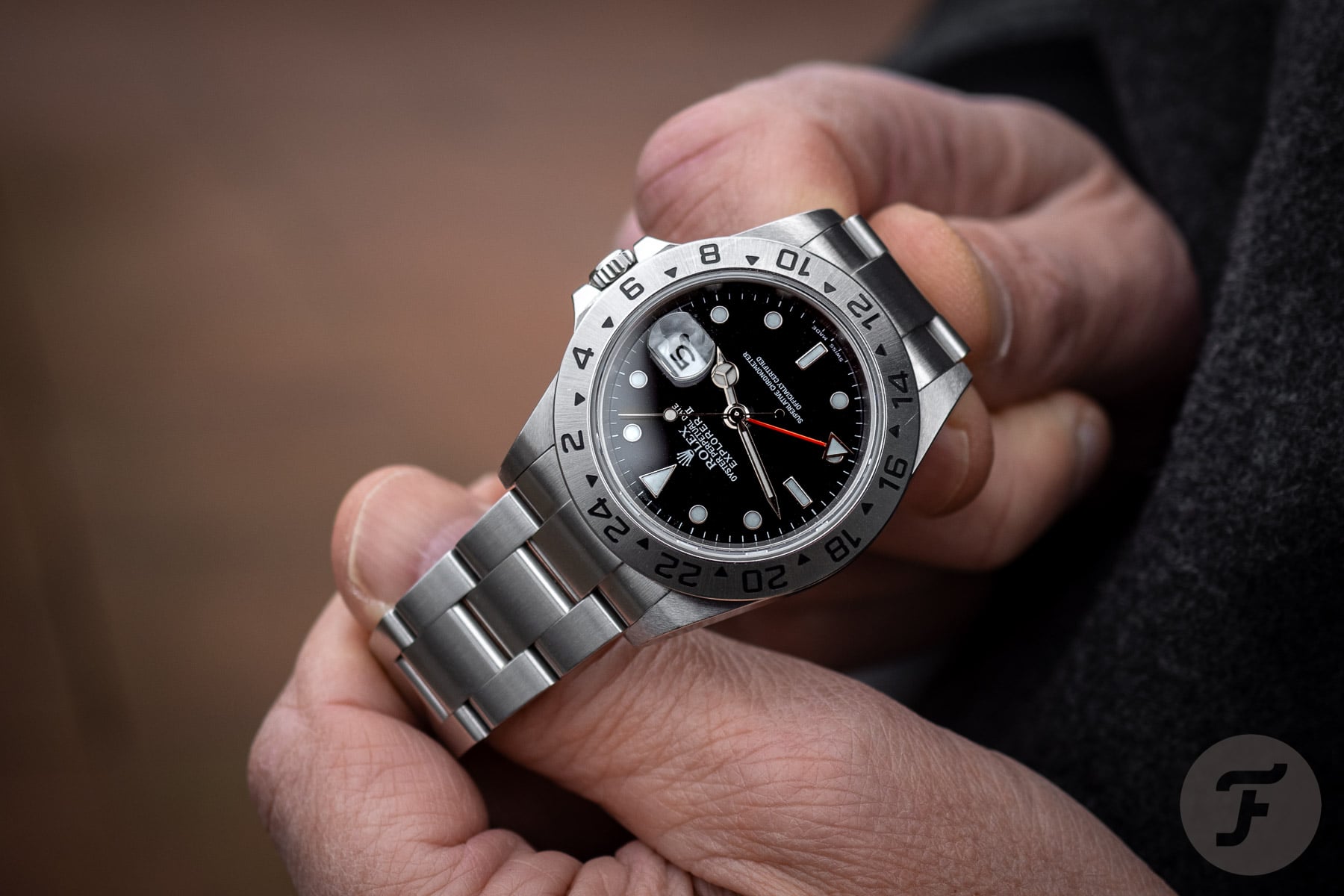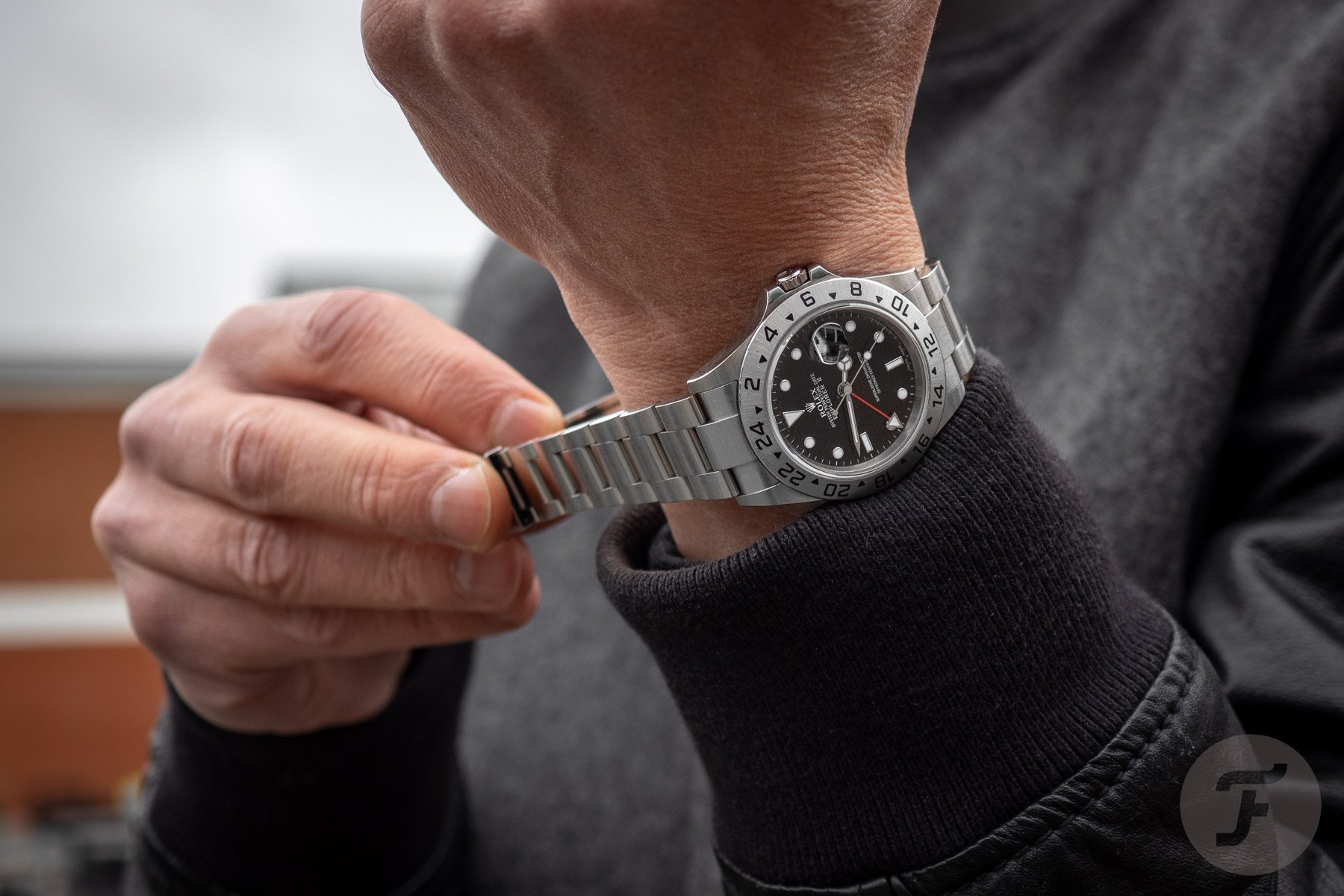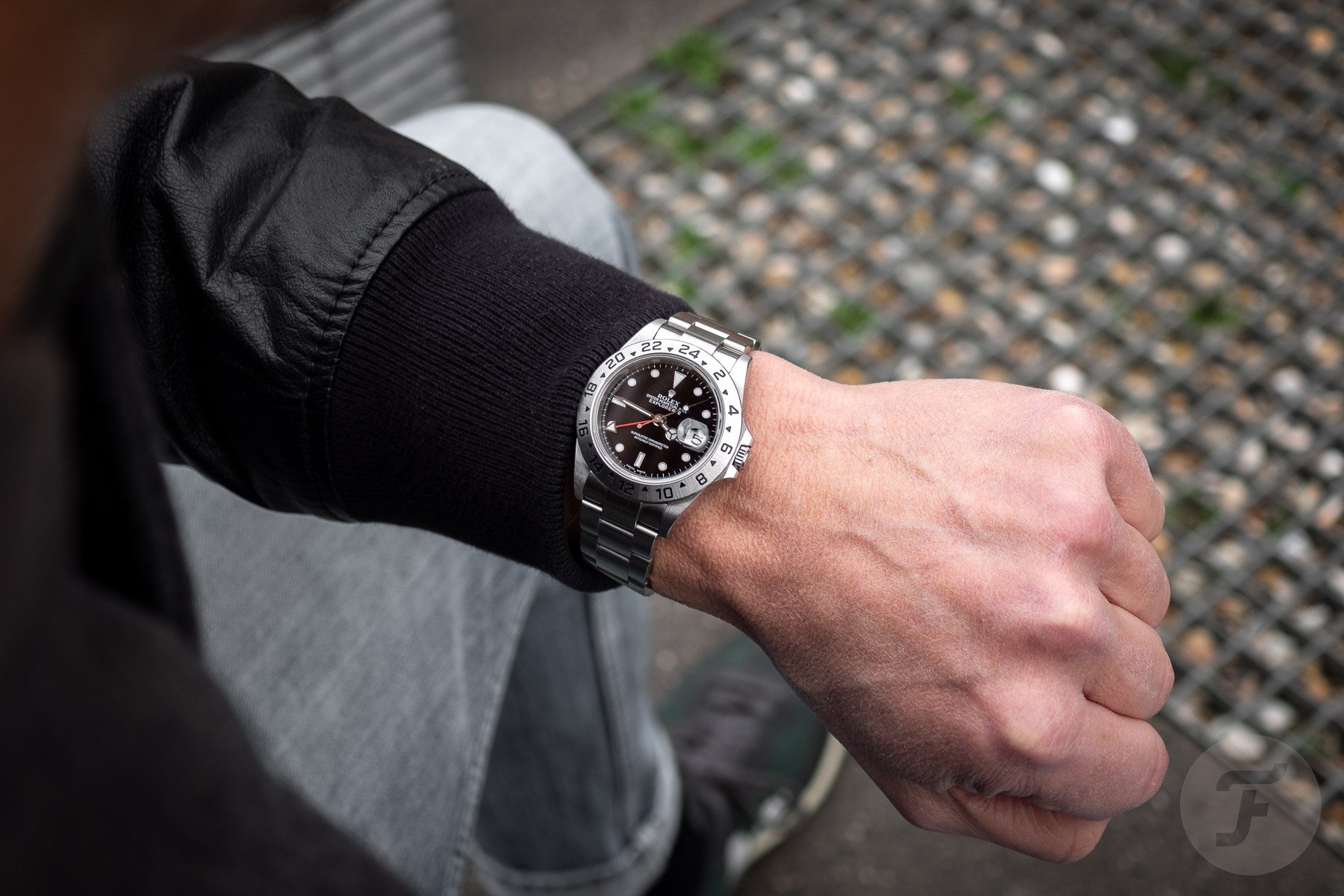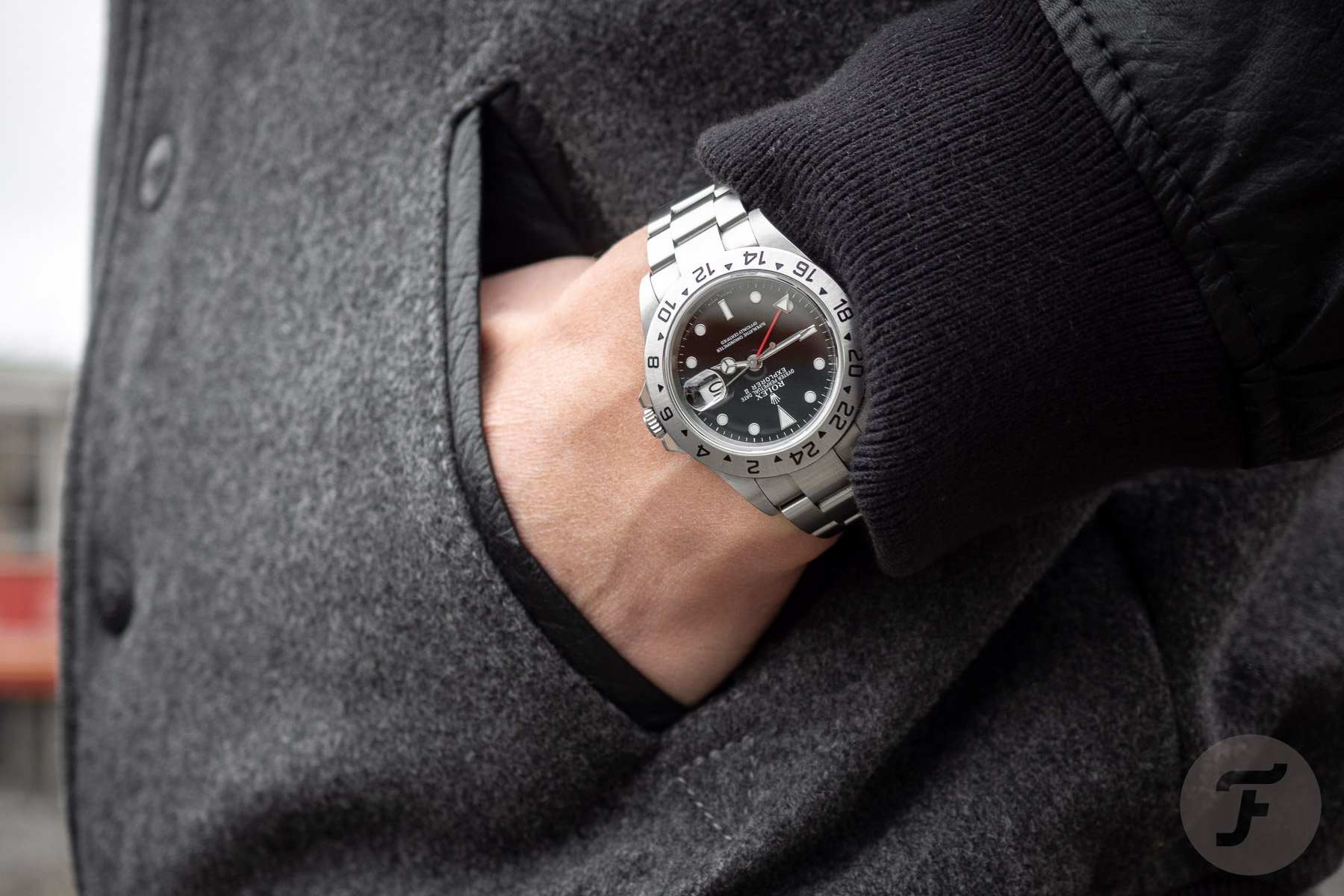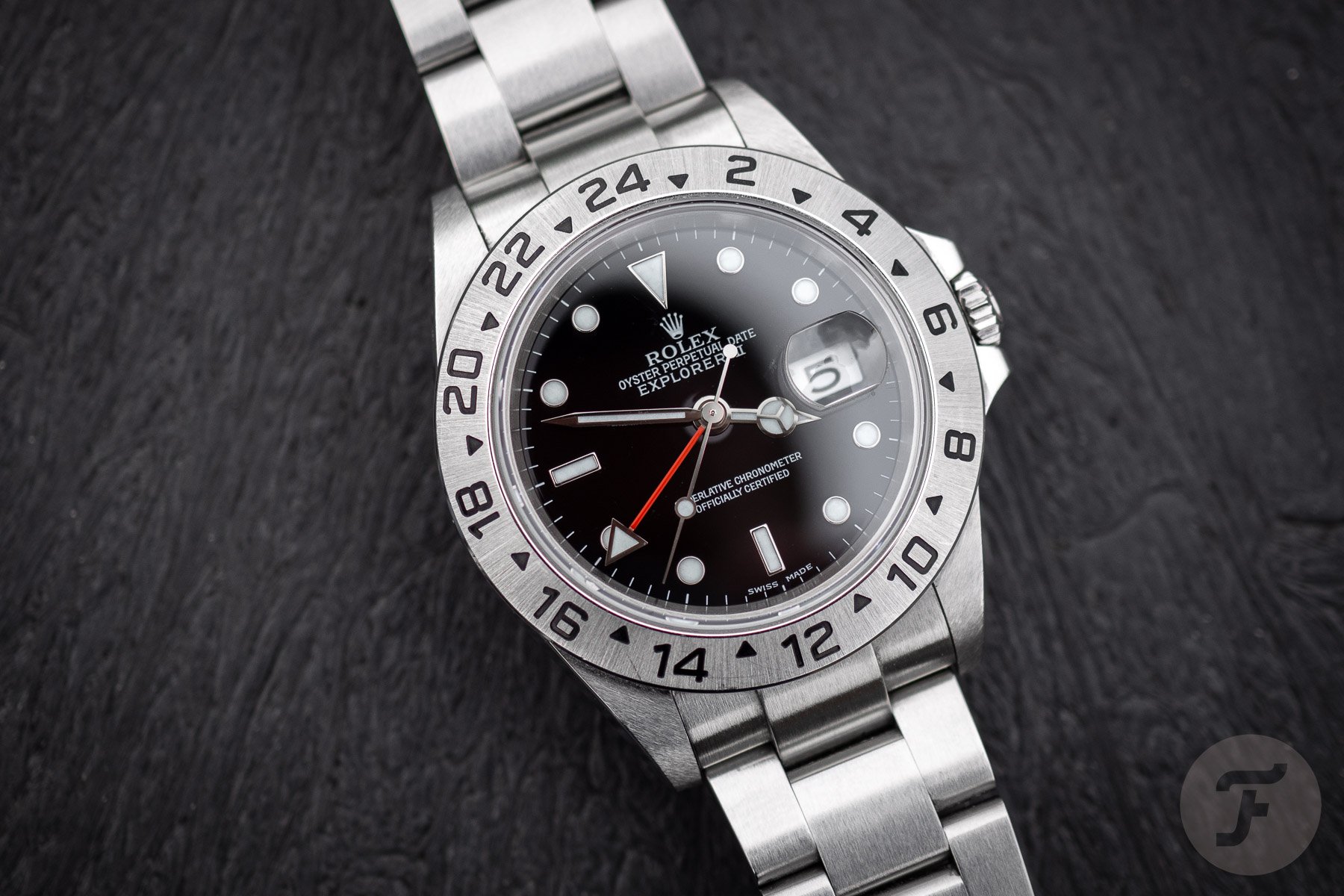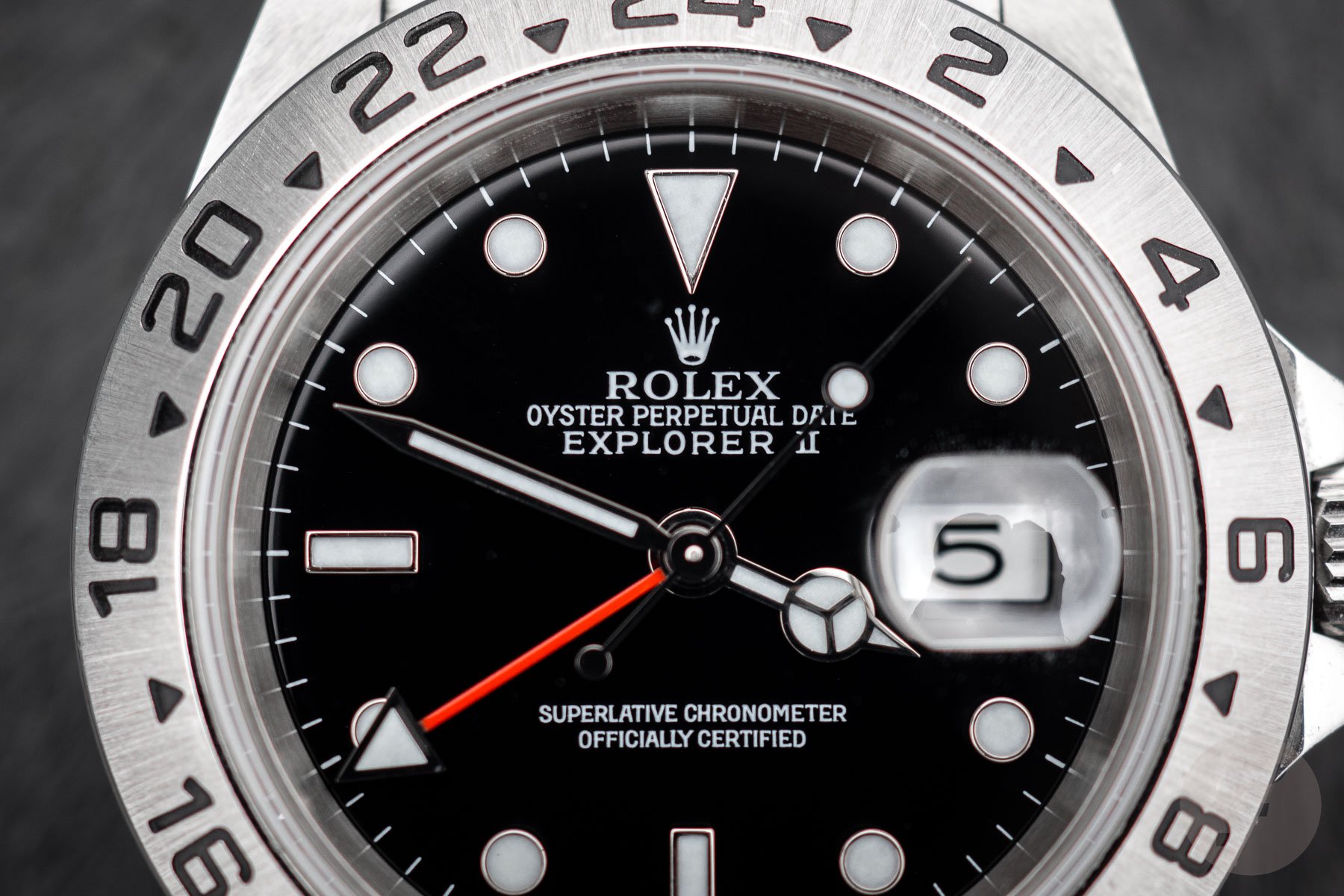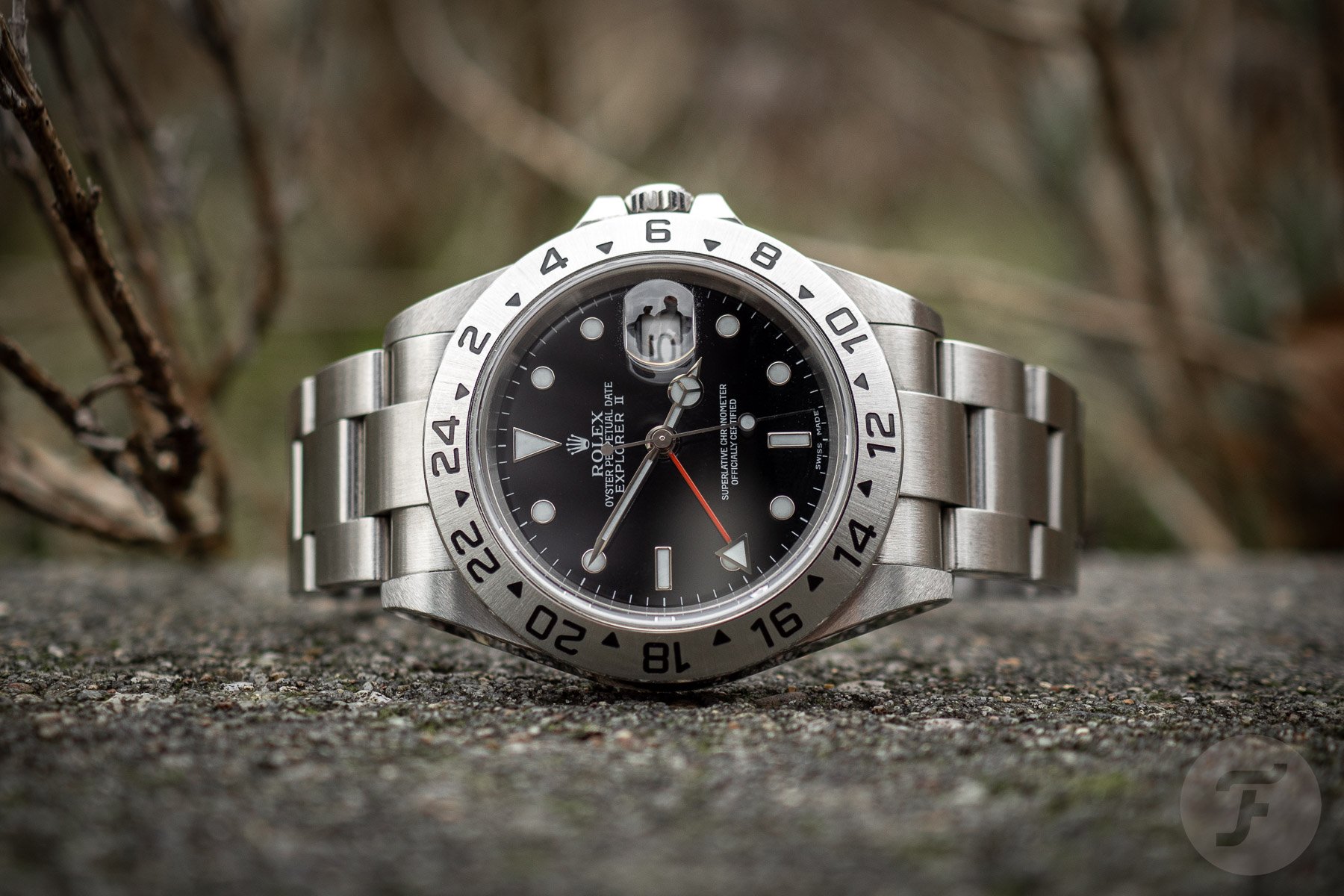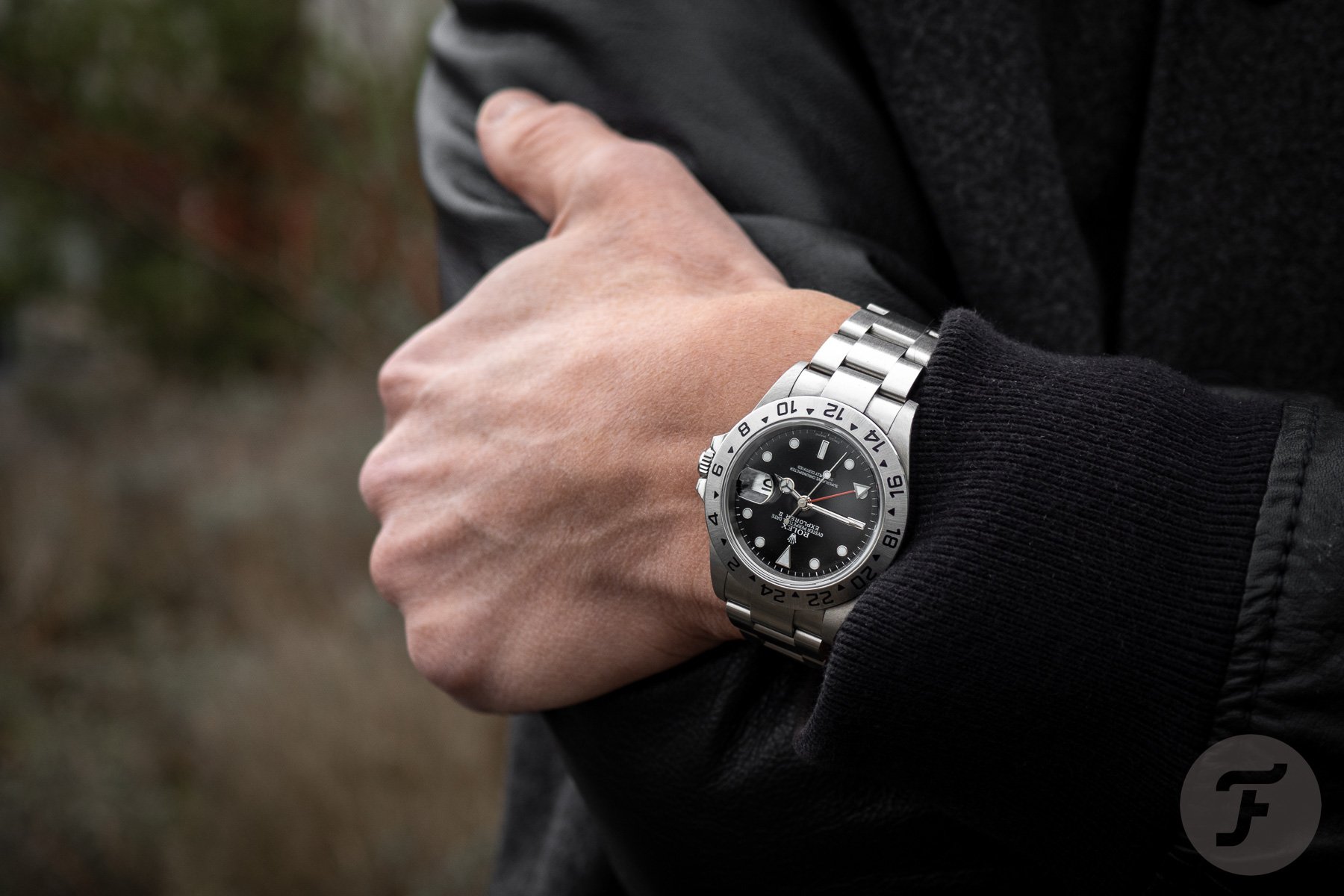This Monday Morning, I Realized I Should Have Bought The Black-Dial Rolex Explorer II 16570 Instead Of The White One
The original Rolex Oyster Perpetual Explorer II 1655 that debuted in 1971 is probably my favorite Rolex watch of all time. I wish I’d felt the same in the mid-1980s when you could pick up an unloved “Freccione” at a huge discount. Unfortunately, I only started warming up to the Explorer II with its steel 24-hour bezel in the late 1990s. In 2000, I bought the model that was in production at the time, the 16570. I came across the white-dial version, nicknamed “Polar,” and I thought I did the right thing by trading in my Breitling Navitimer for a sporty Rolex. For some reason, though, the watch never felt right on my wrist. This morning, I realized I should have bought the black-dial Rolex Explorer II 16570 instead of the white version.
Thanks, Thomas. Thanks for giving me insight by wearing your black-dial Rolex Explorer II 16570 this morning. I spotted it several times on your wrist and also read your article about it, “Exploring Evergreens: The Black-Dial Rolex Explorer II 16570.” For some reason, though, I never asked you if I could take a closer look at it and try it on for a bit. This morning, I did, and that’s when I realized I should have bought the black-dial Rolex Explorer II 16570 instead of the Polar.
Why I should have bought the black-dial Rolex Explorer II 16570 instead of the white one
Okay, to be fair, buying the 16570 with a white dial was a mistake, but not having bought the 1655 was the original mistake. By not buying the fantastic Freccione, I became susceptible to the 16570. In my defense, I hadn’t been in the “watch game” for too long. There was still a lot to learn, and you learn by making mistakes, right? Well, my single Rolex mistake was buying the white-dial 16570. I bought it for a few reasons. The first was the fact that, with the trade-in Breitling, it was very affordable. The second reason was the fact that it was a Rolex. No, I am not ashamed to say that the presence of a crown on the dial mattered.
The third reason was the presence of a GMT hand and a steel bezel with a 24-hour indication. Even back then, I already had a thing for metal bezels over colored ones. Proof of that enduring preference can be found on my wrist in the shape of the Omega Speedmaster Replica 3594.50, my continuous infatuation with the Grand Seiko Evolution 9 GMT SBGE285 “Mist Flake,” and my new-found love for the Omega Seamaster Diver 300M Nekton (you will read more about that diver soon, by the way).
Timeless black
One of the reasons that I never warmed up to my Rolex Explorer II 16570 was because of its white dial. At first, I thought it was fresh, crisp, and a little more special than the black one. But no matter how often I wore it, the Polar proved distant, aloof, and just plain cold. Contributing to that was the fact that I bought the third version of the 16570. In total, Rolex built four generations of the 16570. It started with a series built between 1989 and 1997. It came with a 100m-water-resistant 40mm Oyster case — a millimeter larger than the 1655 — with a 47mm lug-to-lug length and a 12.2mm thickness.
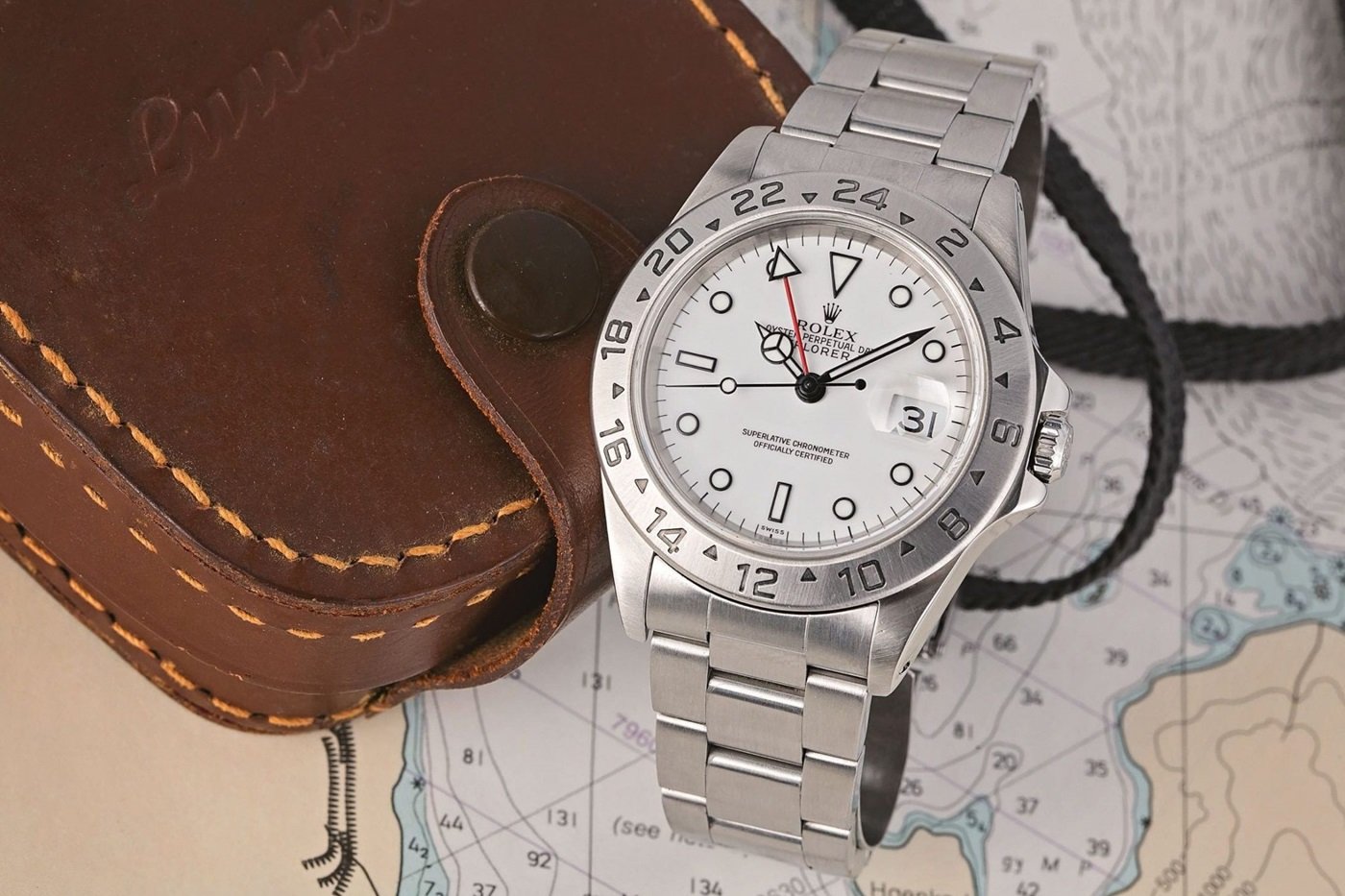
A second-generation Rolex Explorer II 16570 “Polar” with Luminova and “Swiss” dial — Image: Bob’s Watches
The automatic caliber 3185 inside was the same one as in the GMT-Master II of that time, featuring an independently adjustable 12-hour hand and a slender, red GMT hand. This is a so-called flyer GMT movement, which makes traveling through different time zones a breeze. The most notable aesthetic feature of the first-generation 16570 was undoubtedly the tritium lume in the black-coated white gold indexes and hands. If you see a first-generation 16570 nowadays with “SWISS – T<25” at 6 o’clock on the dial, you’re most probably looking at indexes and hands showing a rich, creamy, custard-like color.
A non-tritium “Swiss Made” dial
I have to be honest; even if my 16570 “Polar” had donned glow-in-the-dark tritium, I wouldn’t have been able to enjoy the custard-colored patina. That’s because the radioactive isotope of hydrogen with a half-life of ~12.3 years started white, and I wouldn’t have had the watch long enough to see it patinate and keep me entertained and satisfied. Instead, my third-generation 16570, which Rolex produced between 1999 and 2005, featured a “Swiss Made” dial and non-radioactive Super-LumiNova.
The black-dial Explorer II 16570 Mark 3
The watch I’m wearing and loving is a black-dial Explorer II 16570 Mark 3 from 2004. I consider it aesthetically superior to the fourth generation because that one has the rehaut with “Rolex” engraved over and over again. To me, that “feature” just looks a bit out of place. It’s too modern for a watch that still has a strong vintage vibe. What’s also interesting is the combination of case and end links on the Mark 3. The one you see here has non-drilled cases and solid end links. This means that you get modern(ish) build quality — much sturdier than earlier 16570s with drilled lug holes and flimsy folded end links — with a (neo-)vintage look and proportions.
Since I still have a weak spot for white dials and am not the biggest fan of black ones, it surprised me big time that the darkest version of the Explorer II immediately felt and looked good to me. The proportions are spot on, and the watch feels fairly modern (even if the folding clasp certainly doesn’t). Plus, the deep black color of the dial gives it a certain gravitas and no-nonsense presence that speaks volumes. Yes, in pictures the “Polar” is the cool mistress of your dreams, but in real life, the exact opposite of that version is the companion you want to roll with. I see that now. It took me more than 20 years to come to that insight. You could call that sad, but it also teaches us that we’re never too old to learn.
Will I act on my new-found insight or not?
Rolex stopped producing the 16570 in 2011. Its successor, which debuted that year and celebrated the 40th anniversary of the Explorer II, got the reference number 216570. With its 42mm Maxi case, it’s just too big for my taste. Furthermore, while the large orange 24-hour hand might be an homage to the Freccione, the rest of the watch is anything but. That leads to a bit of an uncomfortable feeling. It’s akin to listening to Star Trek star William Shatner covering the Beatles classic “Lucy In The Sky With Diamonds.” The 216570 is a bad cover of the 1655, and so is the current 226570 that Rolex presented in 2021. The tweaks that the 226570 received — revised lugs and bracelet dimensions, a new movement, and a lacquered dial — benefitted the watch, but they weren’t enough to make me desire it.
No, it’s the black-dial 16570 that I find myself warming up to. My collection needs a GMT watch, and a neo-vintage Explorer II is now on my wish list next to the titanium Grand Seiko SBGE285 “Mist Flake.” A search on Chrono24 tells me that there are 116 16570s with a black dial currently available and that I need around €8K to get a good one. For comparison, a new Mist Flake at retail will set me back €8,900, and on Chrono24, there’s an unworn example in Spain that will set me back €7,260 with shipping. Yes, the agony of choice and budget allocation is in full swing. Thank you, Thomas; thank you very, very much.

